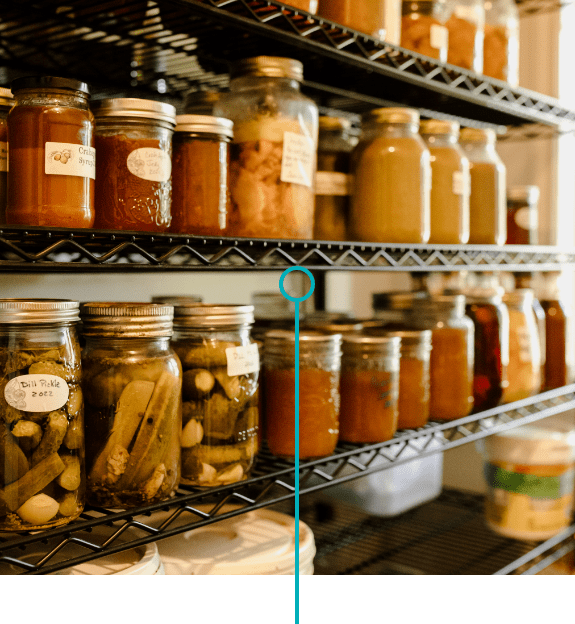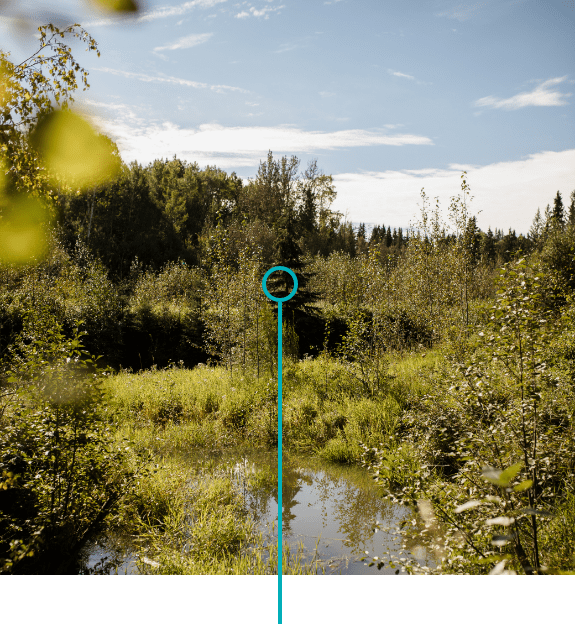What are your goals?
As pioneers in the field of regenerative land management, we’ve spent years refining our processes. We help you identify your resources, define your goals, and develop a laser-sharp strategy for success.
Dave had no idea how his practical idea to build a greenhouse would lead to a greater sense of purpose and fulfillment in life. Here’s what he discovered.
He means he felt he was making a smart decision to build a passive solar,
“Greenhouse of the Future” on his property. However, he had no idea where that idea would lead.
As luck would have it, he initiated a life-changing journey for his family, one whose blessings seem to have no end.
Dave’s initial, smart choice to build a greenhouse was a natural response to realizations he was making about the global food supply. For example, as food supply chains grow increasingly globalized, people in British Columbia where Dave and his family live find themselves eating “3,000-mile salads” where the key ingredients are grown far away in California and then transported to local stores.
Any major disruption in such an interdependent, globalized supply chain becomes an existential threat to people whose food is grown so far away.

His family needed a backup plan, one built with redundancies which wasn’t dependent on global supply chains or the harsh, arid, frigid climate of British Columbia.
“I’m a person who plans for the worst but hopes for the best as a general strategy throughout life,” Dave said.
The smart tactic was to build a greenhouse. A greenhouse would allow him to extend British Columbia’s cripplingly short growing season and allow his family to grow an abundant supply of fresh food in a controlled environment.
Dave is a data-driven guy, and he did his research, meeting with horticultural experts at a university and exploring no less than four different models of greenhouse construction.
One stood out among the rest. He had seen a video by Rob Avis, Founder and Senior Advisor of 5th World, about “The Greenhouse of the Future.”
He quickly discovered that The Greenhouse of the Future exists today. There were existing proof-of-concept models he could visit, and he found that Rob gave the most clear, complete description of the concept, the technology involved, and its benefits.

Passive solar designs create intensely energy-efficient structures which use the sun’s natural heat and geothermal energy to maintain a stable growing climate year-round.
One of the core components of a passive solar greenhouse is the system of earth tubes running beneath and beyond the structure.
Earth tubes, buried beneath the greenhouse foundation, take advantage of the energy stored within the ground to maintain a steady temperature within the greenhouse year-round.
Earth tubes are just one of the innovative techniques used to create a low-energy solution for climate control.
Dave’s regenerative greenhouse was built on the principles of permaculture, and chief among them is the quest to find interconnectivity between the different systems within a greenhouse or property In this case, there was a chance to use an interconnected design to create a more joyful experience of using the greenhouse.
In the past, a greenhouse was usually thought of primarily as a space for growth. But what if it could also serve as a place to process the food being grown and store it?
Beyond the growing space people usually associate with a greenhouse, Dave’s design features a massive industrial kitchen where food can be processed and canned. Just beyond the kitchen lies a naturally climate-controlled root cellar for year round storage.
Instead of hauling large loads of jars, food, and equipment back and forth between the greenhouse and the family’s home, everything happens in a matter of steps. This creates a seamless, stress-free experience for the family.
The greenhouse becomes a contemplative refuge where it doesn’t matter if you track dirt into the kitchen and where there’s room to chop, cook, and process a large harvest. Instead of logistics, the focus is on celebrating abundance and accomplishment.
And when the work is done, everyone in the family finds their own place to enjoy the refuge they’ve created.
“Right now, I’m buying classical guitars so I can make sure there’s always one handy in the greenhouse,” Dave said. “I can’t wait to take my breaks, sitting on a nice little chair and playing a song for the plants.”
As pioneers in the field of regenerative land management, we’ve spent years refining our processes. We help you identify your resources, define your goals, and develop a laser-sharp strategy for success.
While touring Dave’s property together, Rob began to point out the other aspects of the farm’s ecosystem that would impact the success of the greenhouse.
Most notably, Dave’s well was about to dry up, and in a semi-arid desert climate, he was already facing an existential threat to his land. Without water, the greenhouse would be the least of his concerns.
To make matters worse, even if he could increase the flow of water from the well, it would emerge as hard water, and the minerals would cause calcification and blockages in his greenhouse’s systems.
Then, Rob pointed out the answer – water harvesting. Dave could reshape the land to collect and store rainwater and in turn, create an antifragile water and food supply at the same time.
The land could provide for all of his needs if he could only see the connections. This led Dave to take Rob’s permaculture design course and has taken him on an exciting journey of learning how to design a regenerative property with Rob’s guidance.
Dave was well on his way to realizing his goal of food security for his family, but it didn’t take long to recognize that there were far more benefits involved in building a greenhouse.
The food tastes better! There’s no comparison between store-bought tomato and one grown right outside the home.
The food is more nutritious. The greenhouse afford the opportunity to grow rich, nutrient-dense crops. Dave quickly realized that the produce being shipped from 3,000 miles away isn’t bred for nutrition. It’s developed to resist pests and survive long travel times in delivery, and nutrients are sacrificed along the way.
There are psychological benefits. Everyone in Dave’s family can enjoy the calm joy of connecting with the earth and seeing their garden grow.
It brings the family together and provides a place where they can spend quality time year-round.
There are spiritual benefits. Dave even struggles to fully define the feeling, but he knows that he feels more spiritually grounded by maintaining a strong connection to creation – to something bigger than himself.
And don’t forget about that guitar sitting in the corner.
What Dave built is far more than a greenhouse. It’s refuge. It’s a place of healing and hope that provides life-giving abundance for both the body and soul.

5th World’s consultants are among the world’s leading voices in regenerative land management. Their proven process transforms your land into a resilient source of food, water, and energy for generations to come.

In addition to consulting, we design and build regenerative greenhouses. Discover how a custom, state-of-the-art greenhouse can be the centerpiece of your property’s design.

Our world’s ecosystems are collapsing. We need landowners who are willing to show the world a hopeful path. Even though it often feels like the world is falling off of a cliff, humans can be just as regenerative as we are destructive!

As much as regeneration is about survival, it is also about living in abundance and hope! There is great joy in building an anti-fragile, holistic, resilient ecosystem that provides a bountiful supply of food, water, and energy for your loved ones.

Without a clear process to follow, the work of regenerating your land overwhelms as you try to solve every problem at once. We help you figure out where to focus your efforts for the greatest impact.